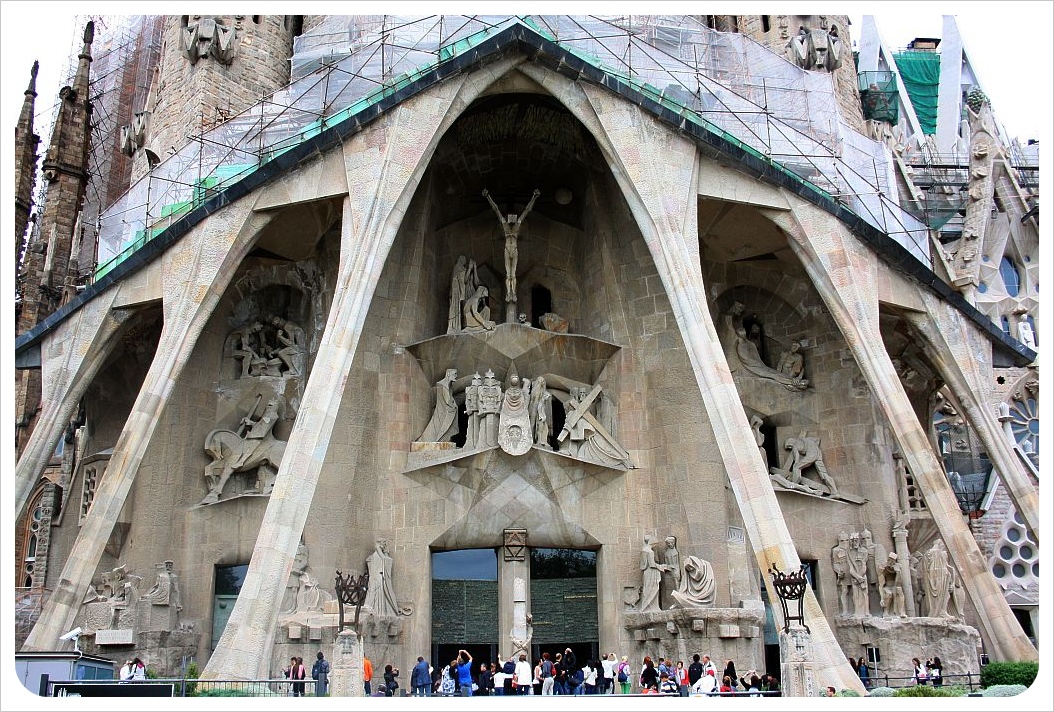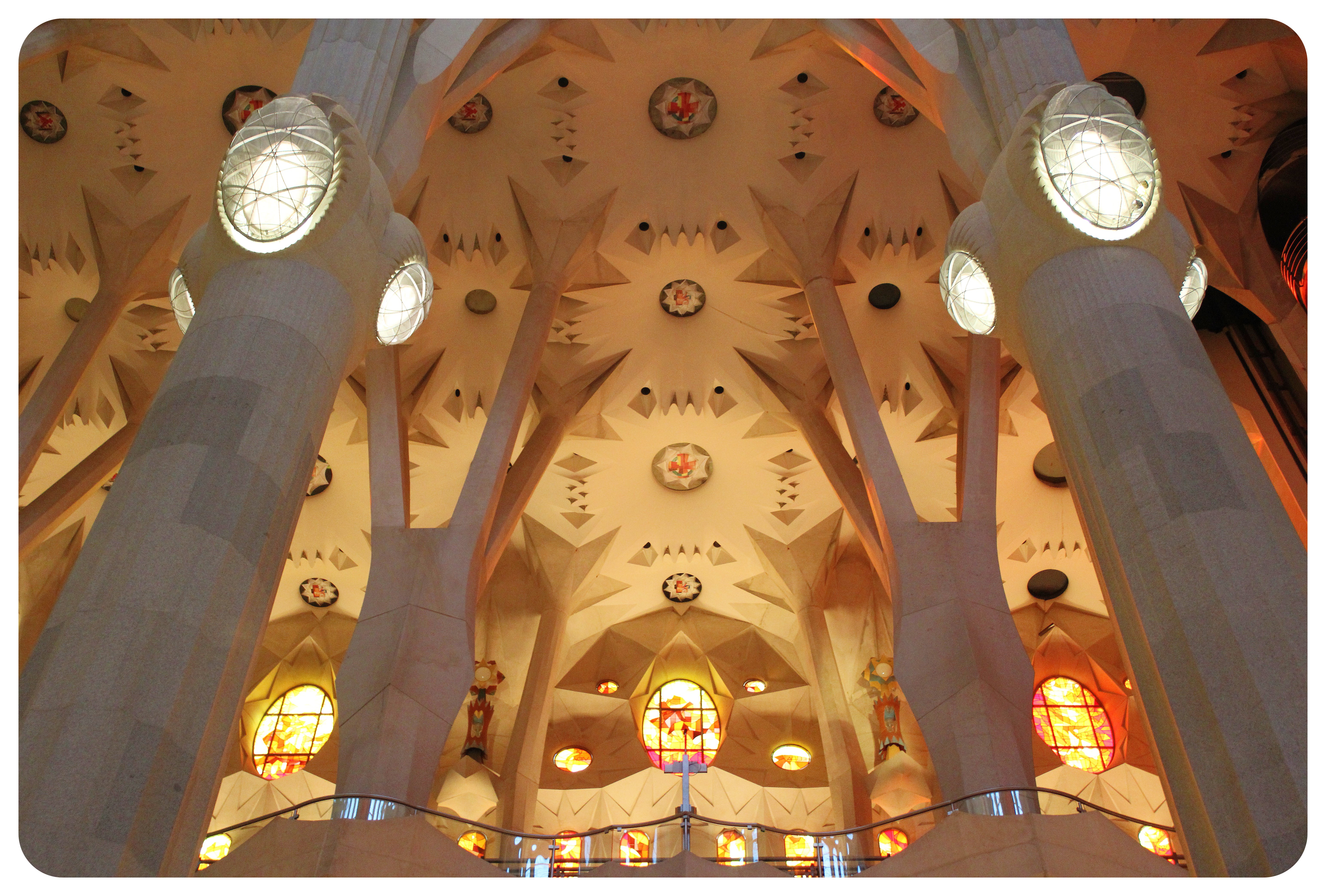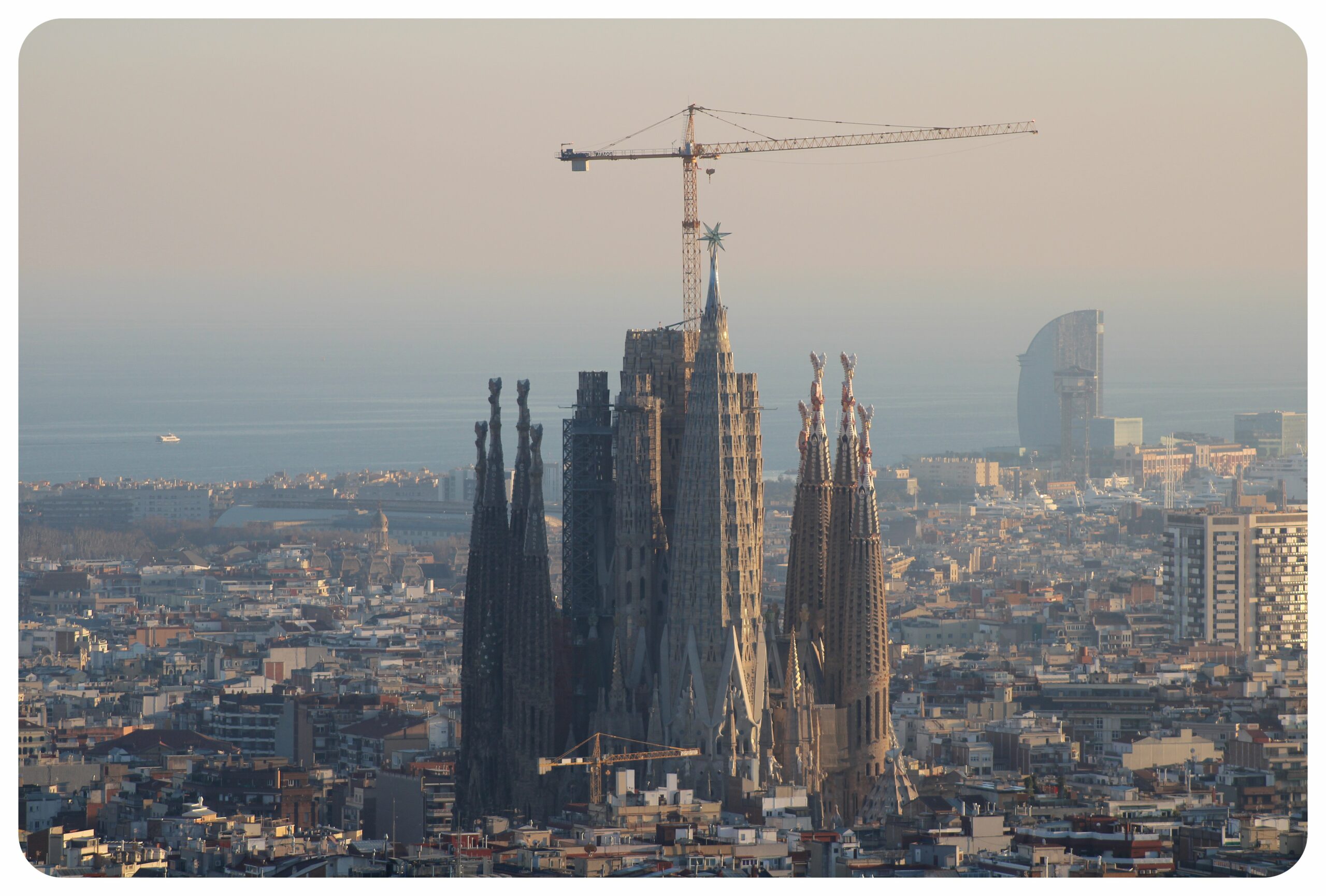Last Updated on March 16, 2024
The Sagrada Família, located in Barcelona, Spain is hands down an architectural masterpiece. Designed by Antoni Gaudí in the 1880s, it is still under construction today after 135 years since the cornerstone was first placed. The project is estimated to be finally finished by 2026 – just in time for the 100th anniversary of the architect’s death. The Sagrada Família is part of the history of Barcelona and a must-see on your trip to the city. If you’re a Gaudi fan, also check out the other Gaudi buildings in Barcelona.
La Sagrada Familia: Architecture, History & Interesting Facts
From the Vatican to Barcelona
Known today as one of Gaudí’s most recognizable works, originally he was not the architect in charge of the project. In 1882, Josep Maria Bocabella had returned from the Vatican inspired by its iconic churches with a desire to build a religious building that would stand out and mean something, inspired from the basilica at Loreto.
He founded the Spiritual Association of the Devotees of Saint Joseph, and he began the campaign to build a temple dedicated to the Holy Family. The architect in charge was Francisco de Paula del Villar, whose original plan was a Gothic revival church of standard form. The crypt of the church started in 1882 with the original design. After six years, Francisco resigned from the lead role.
The architect in charge was Francisco de Paula del Villar, whose original plan was a Gothic revival church of standard form. The crypt of the church started in 1882 with the original design. After six years, Francisco resigned from the lead role.
He had had several disagreements with Joan Martorelli, and then it was offered to Antoni Gaudí who assumed the role on the design in 1883, but obtained the lead of the project as Architect Director in 1884.
Under Construction Since 1882
When Antoni Gaudí assumed the design of the temple, the original plans changed drastically although he kept the Gothic concept combined with Art Nouveau, impregnating his own touch to the plans. One of the most remarkable features of the Sagrada Família is has never been a rushed construction, in the words of Gaudí himself: “My client is not in a hurry.”
Over the years, although Gaudí worked on other projects as well, the Sagrada Familia was still his main focus. And from 1915 he devoted himself almost exclusively to his masterpiece, which in essence was a synthesis of his architectural evolution.
By the time of Gaudi’s death in 1926, the basilica Sagrada Família was only less than 25 percent complete. After his demise, the work was continued by Domènec Sugrañes i Gras, who was his assistant, up until the construction was interrupted by the Spanish Civil War in 1936. Domènec was known for his modernist architecture, but he stayed true to Gaudi’s designs and finished the façade of the Nativity.
During the war, parts of the still unfinished basilica most of Gaudi’s models and workshops were destroyed by Catalan anarchists. The current design is based on reconstructed versions of those plans that were destroyed and other modern adaptations as well.
Four catalan architects – Francesc Quintana, Puig Boada, Lluís Bonet i Garí and Francesc Cardoner – took care of the work once the war was over. The illumination was conceived by Carles Büigas. The current director and son of Lluís Bonnet, Jordi Bonet i Armengol, has been introducing computer technology into the design and construction process since the 1980s. The Executive Architect and Researcher is Mark Burry from New Zealand. The façade has been decorated by the following sculptors J. Busquets, Etsuro Sotoo and Josep Maria Subirachs. And Jordi Fauli who is native to Barcelona, took over as the chief architect in 2012.
Since then, the work has been concentrated of the crossing and supporting structure for the main steeple of Jesus Christ.
Design of the Sagrada Família
After the completion of the apse and the crypt, still intended to be lifted in Gothic style, the rest of the church would be conceived in an a more organic style in an attempt to imitate the natural shapes with their abundance of ruled surfaces. The intention of the interior was to resemble a forest, with inclined columns to resemble branching trees, creating a simple but sturdy structure. 
Gaudí put into practice all his previous experiments, including designs such as the Park Güell and the crypt of the Colònia Güell. His intention was to create a church with a perfect structure, with decorative elements in perfect harmony and aesthetically pleasing.
The architectural plan of the Sagrada Familia is cruciform: a large nave composed of five smaller naves, a transept with three naves and an apse with seven chapels. It also has three facades that are dedicated to the birth, passion and glory of Jesus Christ, and in its final design 18 towers are contemplated: four on each side (twelve in total, representing the twelve apostles), four on the transept (representing the evangelists), one in the apse dedicated to the Virgin Mary and the central tower in honor of Jesus, which is planned to reach 172.5 meters in height.
Although it was not designed to be an actual cathedral, the Sagrada Familia was conceived to be the size of one. There are no exact angles to see it inside or out and there a few straight lines in the design.
Current Construction Status
In 2015, the current chief architect Jordi Fauli announced that 70% of the construction of the Sagrada Familia had been completed and that it had entered the final phase, in which it is contemplated to raise six immense steeples. Most of the structure of the church is to be completed by 2026, which marks the centennial of Gaudi’s death. In 2017 it was estimated that the decorative elements should be completed by 2030 or 2032. To be able to accelerate the construction of the building the architects have relied heavily on computer-aided design technology.
Why You Should Visit the Sagrada Família
The Sagrada Família is an essential part of the history of Barcelona, although construction began in the 1880s, it is still being built today. Don’t miss out on the opportunity to explore it when you visit Barcelona, it is an iconic building that beautifully represents the vision and boldness of Antoni Gaudí.
It is a definite must-see building that you should take the time visit and admire the greatness from the outside and the inside as well. The visitor entrance fees which starts at €26 (or €30 with an audio guide) help finance the annual construction budget of €25 million, which has always been funded by investors and the public.




